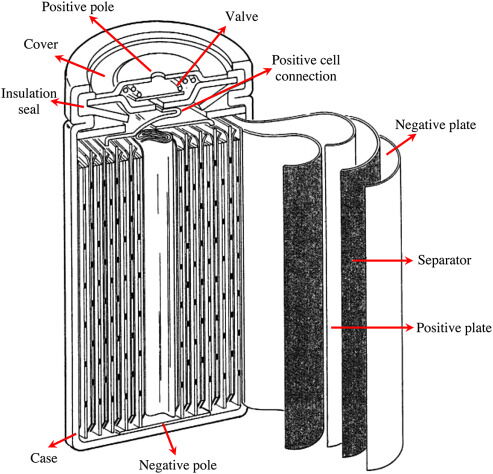Electric vehicles (EVs) and EV chargers have become a focal point in the automotive industry, heralding a new era of sustainable transportation. Central to the functionality and performance of these vehicles is the electric vehicle battery. Understanding the types, workings, and construction of EV batteries is crucial for anyone interested in the technology powering the future of mobility. In this article, we will explore the various types of electric car batteries, how they operate, their construction, and their longevity.

Lithium-ion (Li-ion) batteries are the most commonly used batteries in electric vehicles today. Their popularity stems from their high energy density, lightweight design, and ability to recharge quickly. Li-ion batteries are composed of lithium, cobalt, and other materials that allow for efficient energy storage and release. These batteries also have a low self-discharge rate, meaning they retain their charge for a longer period when not in use. However, they require sophisticated management systems to prevent overheating and ensure safety.
Nickel-metal hydride (NiMH) batteries were once the standard for hybrid vehicles and are still used in some electric vehicles. They have a lower energy density compared to lithium-ion batteries but offer a longer cycle life. NiMH batteries are robust and can perform well in varying temperatures, making them suitable for diverse climates. While they are gradually being phased out in favor of lithium-ion technology, they remain a viable option for specific applications.

Lead-acid batteries are one of the oldest types of rechargeable batteries and are commonly used in traditional vehicles for starting, lighting, and ignition (SLI) purposes. In the context of electric vehicles, they are primarily found in low-speed electric vehicles (LSEVs) and some older hybrid models. While lead-acid batteries are relatively inexpensive, they are heavy and have a lower energy density, limiting their application in modern EVs.
Ultracapacitors, also known as supercapacitors, are not traditional batteries but rather energy storage devices that excel in rapid charge and discharge cycles. They can provide bursts of power for acceleration and are often used in conjunction with conventional batteries to enhance performance. While they cannot store as much energy as batteries, their longevity and ability to handle high power levels make them an attractive option for certain applications, such as regenerative braking systems.
Solid-state batteries represent the next frontier in battery technology. Unlike traditional batteries that use liquid electrolytes, solid-state batteries utilize solid electrolytes, which can enhance energy density and safety. These batteries are less prone to catching fire and can potentially offer longer ranges for electric vehicles. Though they are still in the developmental stage, advancements in solid-state technology could revolutionize the EV market by providing faster charging times and greater longevity.
An electric vehicle battery operates on the principle of electrochemistry. It stores electrical energy in the form of chemical energy, which is then converted back into electrical energy to power the vehicle's electric motor. When the vehicle is charged, electricity flows into the battery, causing a chemical reaction that stores energy. When the vehicle is in use, this stored energy is released, powering the electric motor and propelling the vehicle.
The battery management system (BMS) plays a critical role in monitoring the battery's performance, including its state of charge (SoC), state of health (SoH), and temperature. This system ensures the battery operates within safe limits and optimizes performance, enhancing the battery's lifespan and efficiency.
Unlike AA or AAA batteries, which consist of a single battery cell, electric vehicle batteries are composed of numerous individual cells grouped together into modules. A complete EV battery, known as a battery pack, can contain dozens of these modules, each consisting of multiple cells. This modular design allows manufacturers to tailor the battery's capacity and performance to meet the specific requirements of different EV models.
Each cell typically contains an anode, cathode, and electrolyte. The anode and cathode are made from specific materials that facilitate the flow of ions during charging and discharging. The electrolyte allows ions to move between the anode and cathode while preventing electron flow, which is crucial for maintaining the battery's charge. The construction of these cells is critical to ensuring efficiency, safety, and longevity.
Battery degradation is a natural chemical process that gradually reduces an electric vehicle (EV) battery's ability to hold a full charge and deliver optimal power. Over time, as the battery undergoes repeated charging and discharging cycles, its capacity diminishes, making it less efficient. When a battery is new, it operates at 100% State of Health (SOH), but after several years of use—for example, a decade—its SOH may drop to around 85%.
This degradation doesn’t affect the vehicle’s performance in terms of speed or power output, but it does result in a reduced driving range and the need to recharge more frequently. While this might sound concerning, most EV manufacturers provide warranties that guarantee the battery’s SOH for a specific period, often covering a significant portion of the vehicle’s lifespan. This means that if you’re purchasing a new electric car, battery degradation is unlikely to be an immediate concern.
Advancements in battery technology and management systems have also helped slow down the degradation process, ensuring that modern EVs maintain their efficiency and range for many years. As a result, drivers can enjoy the benefits of electric mobility with confidence in their vehicle’s long-term reliability.
The lifespan of an electric vehicle battery can vary significantly based on several factors, including the type of battery, driving conditions, and charging habits. Most lithium-ion batteries are designed to last between 8 to 15 years, with many manufacturers offering warranties of 8 years or more for their batteries.